Overview
Famous brands and companies named after people
There are many well-known brands and companies that are named after people. Some of these namesakes are famous in their own right, while others are less well-known. However, all of these brands and companies have one thing in common: they were named after someone who had a significant impact on the company or brand. Here are just some of the most famous brands and companies named after people.
- The car company Chevrolet was named after its founder, Louis Chevrolet.
- Nike is named after the Greek goddess of victory, Nike.
- Chanel was founded by Coco Chanel, considered one of the greatest fashion designers of all time.
- The Walt Disney Company was founded by Walt Disney himself.
- Nestlé is named after its founder, Henri Nestle.
- The well-known Illy Caffè was founded by Francesco Illy.
- Bloomberg was founded by Michael Bloomberg in 1981.
Other brands have experimented with their name to create a slightly more inventive term. For example, the name “Adidas” is a combination of the first letters from Adolf Dassler’s surname and his nickname “Adi”.
Many of these famous names have now become recognizable brands, with consumers not even realizing that the name they have grown to know and trust once belonged to a person. In some instances, the founders are just as well-known as the company they founded, such as Michael Dell and his self-titled computer company or Henry Ford, founder of the Ford automobile corporation.
Why are these brands and companies so successful?
- Personal connections are one of the key ingredients that make these brands so successful. People feel a sense of authenticity and trust when they are associated with a brand or company that is named after someone they know.
- The fact that these companies are named after real people gives them instant authenticity and trustworthiness. This is because it lends credence to the idea that these businesses really do exist, and that their products actually have the power to make people happy.
- Their success is a testament to the power of personal branding. These businesses were able to tap into people’s emotional connection to their namesakes in order for them to thrive.
The psychology behind why we’re drawn to brands with personal stories
The personal story behind a brand can be a major source of appeal for consumers. We are naturally drawn to people and companies with compelling stories that we can identify with, and a strong personal story can add an emotional element to a brand that makes it more relatable and appealing. In many cases, the founder’s story is the company’s story, and consumers are attracted to that level of authenticity. There is something special about supporting a company that has been built from the ground up by someone with a clear vision and passion for their product or service.
How can entrepreneurs use personal names as a powerful branding tool?
Today, many companies choose brand names that are or sound like human names. It is not always the case, as with legacy brands, that the owner gives her/his name to a brand – sometimes, it is just a name that matches the character of the brand, what it wants to communicate to its audience.
Personal names give a strong sense of identity and purpose to the business. Using a personal name as a company brand can help to build instant trust and credibility with potential customers, partners and investors.
By carefully selecting the right moniker for your venture, you can ensure that your business stands out from the competition while still maintaining an identifiable connection to your brand’s or your personal values.
Giving it some grand name that made it sound like it’s been around for 500 years would make people feel more confident that they could put their money there.
Laurel Sutton, co-founder of Catchword
Namepicks – Legacy brands
Below are some names that have stood the test of time. We will dig into their origins and how they got the brand names we have all come to know and love today.
Adidas and Puma
In 1924, brothers Adolf and Rudolf Dassler founded a shoe factory in Herzogenaurach, Germany, focusing on producing innovative spiked running shoes. However, the brothers had a disagreement during World War II and decided to start their own brands.
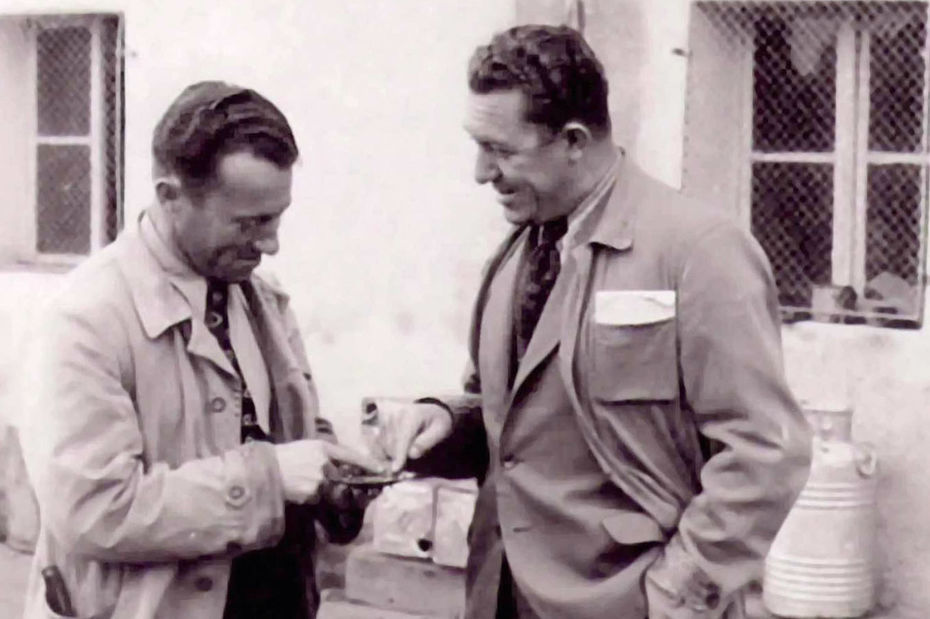
Adolf named his brand Adidas, while Rudolf chose the name Ruda, which was a combination of his first name and surname. Later, Rudolf rebranded the business to Puma. Both Adidas and Puma are now well-known global brands, though it is not widely known that they were founded by brothers.
Dolce & Gabbana
Dolce & Gabbana, also known as D&G, is an Italian luxury fashion house founded in 1985 in Legnano by Italian designers Domenico Dolce and Stefano Gabbana. The brand experienced its highest growth in the 1990s when a wide variety of product lines were introduced, including fragrances, lingerie, and swimwear. The first menswear collection debuted in 1992.
We built our fashion around three fundamental concepts: Sicily, tailoring, and tradition. Our dream is to create a style which is timeless, and to create clothes with such a strong personality that whoever sees them can instantly say without a shadow of a doubt: this is a Dolce & Gabbana.
Domenico Dolce
They were able to distinguish themselves extremely early on in their careers. Their many groundbreaking creations have left an indelible mark on the history of fashion all across the world. Dolce & Gabbana have been working with some of the most popular celebrities in Hollywood, like Brad Pitt, Bruce Willis, Angelina Jolie, Kylie Minogue, Beyoncé Knowles, Catherine Zeta-Jones, Salma Hayek, Demi Moore, and Victoria Beckham.
The company owns a portfolio of domain names, including DolceandGabbana.com and DolceGabbana.com. Dolce & Gabbana’s “DG” emblem is now a globally recognized icon, yet the company was unable to secure the two-letter domain name DG.com. Once owned by the now-defunct computer corporation Data General, DG.com is one of the earliest domains on the Internet. Due to a bidding dispute between Dolce & Gabbana and Dollar General, the domain ultimately changed hands from EMC to Dollar General in 2010.

Mercedes
Mercedes’ story begins with a German engineer, Karl Benz. Benz began his professional life around 1864 in the railways. He worked in different companies and eventually founded one, but his business partner proved to be unreliable. In 1871, Bertha, Karl’s fiancée, enters the scene by buying the share of the dubious partner with her dowry.
The business improves and the two get married one year later. Benz creates the two-stroke engine and this is how Benz & Cie (Benz & Companie Rheinische Gasmotoren-Fabrik) is born. The new venture is doing well, and Benz finally has the time and funds to make a horseless carriage on which he attaches the single-cylinder engine he has just designed.
So where does Mercedes come from, you wonder? In 1902, Mr. Emil Jellinek, a Daimler dealer in the south of France, registered the Mercedes commercial brand that he chose in honor of his daughter, who bears this first name. He then built the first Mercedes cars (Mercedes 35 HP and Mercedes Simplex).
The famous Mercedes logo, a stylized three-pointed star, was drawn in 1909 and became the official emblem of the Mercedes brand in 1911. In 1926, the brand which belonged to the car manufacturer Daimler, merged with “Benz & Cie” of Karl Benz.
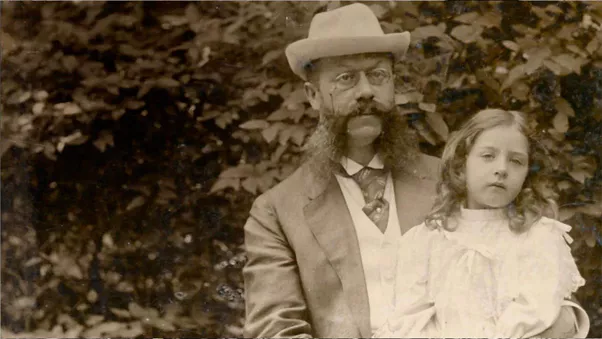
In 1886, Benz filed a patent for a gasoline-powered automobile, the Benz Patent Motorwagen. Over the following months, Benz refined his creation, but being an absolute perfectionist, he did not consider it ready for the market. No question, therefore, of marketing it. Bertha Benz entered the picture again, she was less scared of trying and failing and seemed to have more sense of publicity than her husband.
In the early morning of August 5, 1888, Bertha got behind the wheel of the Benz Motorwagen and, accompanied by her two sons (Richard, 13, and Eugen, 15), set out on the longest journey ever at the wheel of a car without horses – 106 km between Mannheim and Pforzheim, in Germany. She wanted to prove to her husband that his car works well.
Even with some technical glitches that Bertha Benz managed to handle (she was the wife of a mechanic after all!), the small team arrived in Pforzheim at dusk. The desired effect was achieved and the Benz Patent Motorwagen then received excellent publicity! Karl Benz finally begins to sell cars, a step closer to the Mercedes brand we all know and love.
Today the brand has mercedesbenz.com, Mercedes.com, and the version with a dash, mercedes-benz.com, as well as many country domain extensions.

Bridgestone
You may be surprised that the brand name of the world’s largest tire company is actually the name of its founder – Shōjirō Ishibashi. The brand’s original name is Ishibashi Tyres, and the global equivalent – a direct translation of his name.
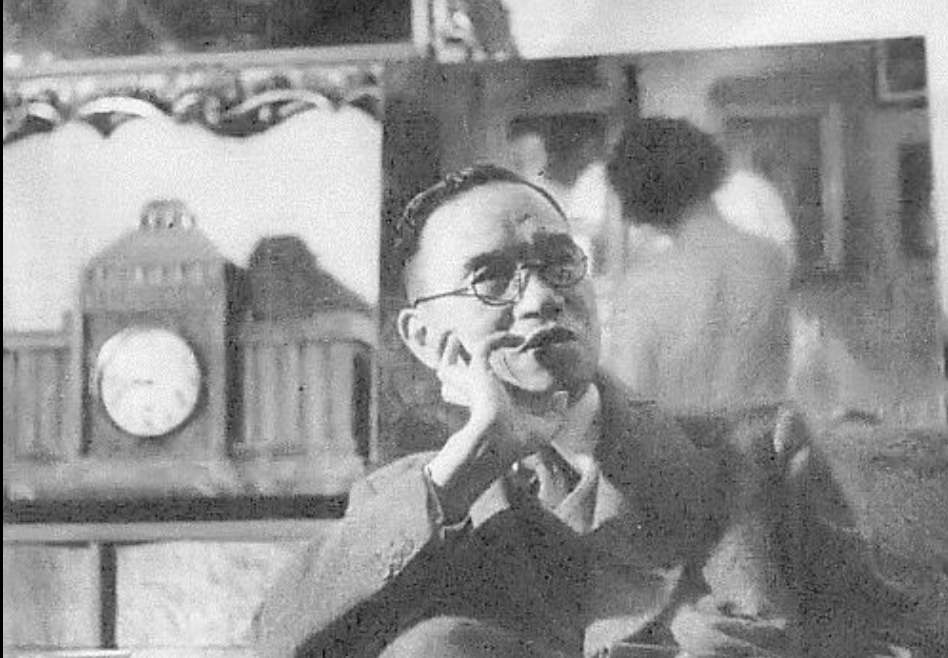
“Ishi” means “bridge,” and “bashi” means “stone.” When the company grew to a global brand, the name was retained as a direct translation.

Antonov
Oleg Antonov was born in the family of a civil engineer. From a young age, he was interested in aircraft construction, attended a school group of aviation enthusiasts. Like many aircraft designers, he began by designing gliders. His first glider, “Dove”, made of plywood and water pipes in 1924, was awarded a certificate for its original and beautiful design. This strengthened the desire to build new aircraft.
While studying at the Leningrad Polytechnic Institute, Oleg recalled that “peak gliders are like pancakes.” The projects of the young designer, which appeared one after another, stood out for their boldness and originality and won universal recognition.
After graduating from the institute, Antonov was sent to Moscow to organize the Central Bureau of Gliding Structures and establish their serial production. Here he built gliders that played an outstanding role in the development of gliders. In 1933, then 27-year-old Oleg was the chief designer of the glider factory in Tushino (Moscow). Here, he created flying machines on which numerous world records were set. Future aviators were trained, and numerous aerodynamic experiments were conducted on the gliders produced by the plant, which were supplied to all aero clubs of the USSR.
During WW2, Antonov’s gliders were unexpectedly widely used. As Igor Sharov notes in his book, more than 600 A-7 transport and landing gliders regularly delivered soldiers, equipment, and combat equipment to various areas of the front, and they were widely used to help partisans. Oleg was awarded the “Partisan of the Patriotic War” medal of the first degree.
In 1946, Antonov became the chief designer of the Antonov State Enterprise, in 1952 transferred to Kyiv, Ukraine. He lived in Kyiv until his last days.
Antonov is rightfully considered the “father” of transport aviation. The Design Bureau, which he headed, designed the An-22 Antey, which marked a new step in aircraft construction – it became the world’s first wide-body aircraft. In its size, it surpassed everything that had been created in world aviation by that time, and here it was necessary for the first time in history to solve many design and technological problems. Many risky experiments were required. The success was noted all over the world. In Paris, at the 26th International Aviation and Space Salon, the plane immediately became the center of everyone’s attention and became the main sensation.
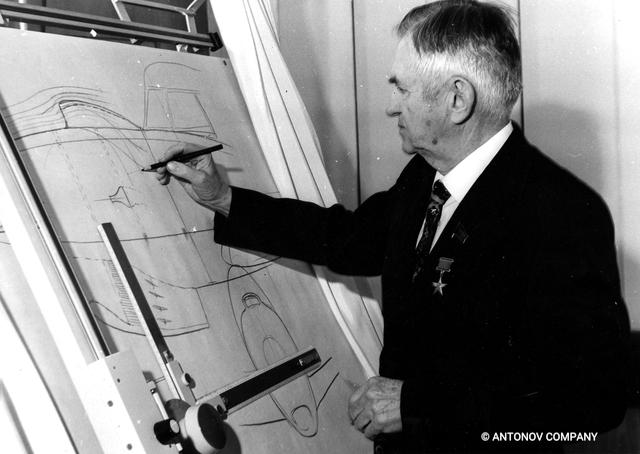
In 2015, the company Antonov was transferred from the Ministry of Economic Development and Trade to the Ukroboronprom (Ukrainian Defense Industry). It operates on a domain exactly matching the brand and founder’s name – Antonov.com.

Balmain
Pierre Balmain was born in 1914 in Saint-Jean-de-Maurienne, a small Alpine village in the Savoie region of France. He is one of those unique designers who created works of art following French fashion after World War II. After a short study of architecture (which his mother loved very much), he assisted the French couturier Lucien Lelong, working with other greats – Christian Dior and Hubert de Givenchy. He left Lelong to establish his house in the autumn of 1945.
Unlike some couture houses that have turned their backs on the original designer, Balmain has always proudly remained true to the vision and pristine spirit of its founder. Since the death of Pierre Balmain in 1982, the house has been guided by a number of strong designers, each of whom has balanced between modern trends and the need to respect the foundations and traditions of the house. These designers – Eric Mortensen, Hervé-Pierre, Oscar de la Renta, Laurent Mercier and Christophe Decarnin – were inspired by the beauty, grace and elegance of Balmain’s Jolie Madame style.
Pierre Balmain’s fine atelier and showroom at 44 Rue Francois 1er, in the heart of the exclusive “triangle” or “neighbourhood” of Paris, has remained a striking iconic address of the house throughout its history. In 2009, the historic boutique was restored to its original 18th-century splendor by Parisian architect Joseph Dirand. Elegant design – with gold trim doors, classic 1940s furniture, Versailles parquet floors and intricate ceiling mouldings, underlines the expression “original devices for an aristocratic residence” and serves as an example for many of the brand’s boutiques and stores around the world.
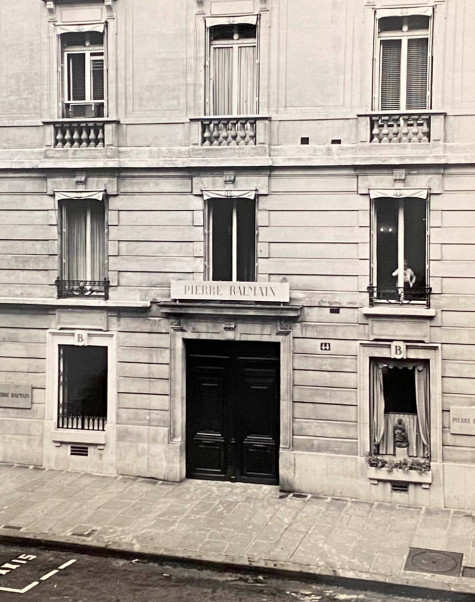
The brand has Balmain.com as well as pierrebalmain.com, pierre-balmain.com, Balmain.fr and over 80 more country-specific names like balmain.asia. You can’t really expect any less from an iconic name like that.

Jordan
Nike entered the basketball shoe market in 1984. To secure a place on the playground for Nike shoes, the company signed Chicago Bulls rookie shooting guard Michael Jordan to a 5-year contract. For that time, it was something incredible – to conclude such a long-term contract with only one athlete. Nike’s managers believed in Jordan’s talent and lived in the dream that he would live up to the expectations of the Bulls’ scouts and help the company make Nike’s shoes popular with basketball fans.
A forgotten now fact is that Michael Jordan was not actually interested in a deal with Nike. In those years, he played in Adidas and Converse sneakers and dreamed of an offer from these brands. Jordan was persuaded to sign the contract by his agent, David Falk. Most likely, he only saw this as a financial benefit, but we all know how this moment turned out for Nike, Jordan himself, and the basketball shoe industry.
The Air Jordan I debuted in 1985. The black and red pair violated the rules of the NBA. League rules required 51% of the shoe to be black or white. From that point on, Nike paid $5,000 for every appearance of a basketball player in Air Jordan I sneakers. The audacious refusal to follow the rules, the fantastic game of “His Air” brought instant success. Demand for Air Jordan I sneakers in stores exceeded supply many times over. Since then, the Air Jordan line of apparel and sneakers has been updated almost every year with cutting-edge basketball designs and, over time, has become an essential part of the Nike lifestyle direction.
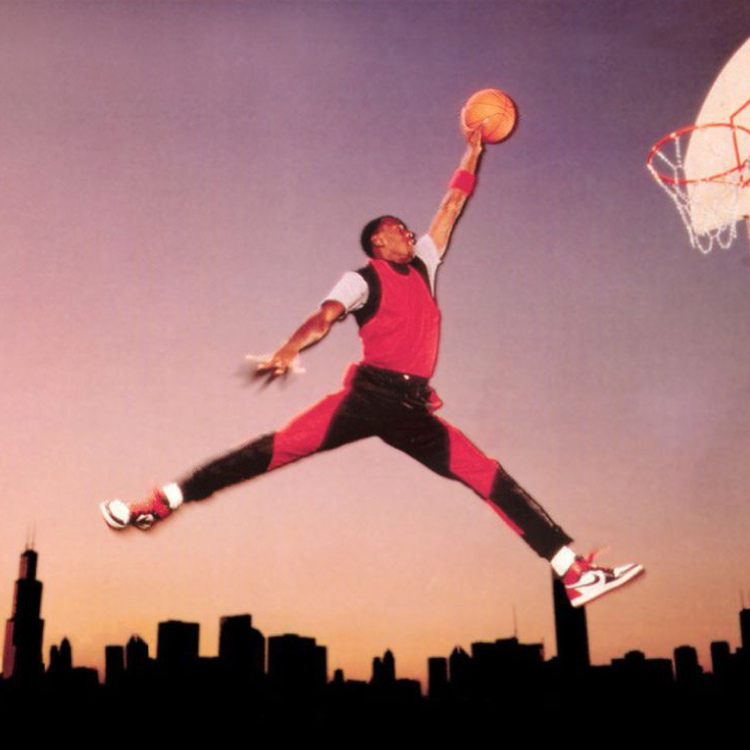
In 1986, the Jumpman logo first appeared on the Air Jordan III. Knowing Jordan’s love of sports cars, Hatfield created the Air Jordan VI in 1991 with a heel counter inspired by the Porsche 911. Released in 1992, the Air Jordan VII was the first Jordan basketball shoe to completely remove the Nike logo from the brand, effectively becoming the brand.
Today, the cutting-edge silhouettes of the fourth decade use Nike’s most advanced technologies, such as Flyknit, Flyweave and FlightSpeed. Air Jordan sneakers hit basketball courts and fashion weeks with equal regularity. Many items are chased by collectors.
The Jordan brand has secured the Jordan.com domain name that directs to a dedicated page on Nike.com’s website. Nike has always been a frontrunner in brand independence, so it is no surprise they have their domain strategy together.

Swarovski
Daniel Swarovski was an Austrian glass cutter, jeweler, and founder of the Swarovski Crystal dynasty. Daniel Swarovski’s expertise in crystal cutting established the company in 1895. With an unwavering dedication to creativity, he has made it the world’s most sought-after jewelry and accessory label. Even now, the family continues the legacy of providing remarkable daily style to ladies all around the globe.
The beautiful thing about working with Swarovski Crystals is that you use them just the way they are. They shine and sparkle the way you want them to. With Swarovski Crystals, there’s no need for scenic enhancements, what you want to do is accentuate what they are already meant to do and that is capture and reflect light beautifully.
David Korins, Creative Director & Designer
Swarovski can be found on their EBM domain, Swarovski.com. The company owns a portfolio of domain names and various extensions such as .net, .life, .luxury, .co, .co.uk, .jewelry, .org, .design and many more, as well as the domain name of their founder DanielSwarovski.com. A good domain strategy is imperative for any business serious about maintaining a consistent and strong presence.

Namepicks – Modern brands
As we touched on above, using a personal name as a brand name is a great way to communicate trust, become easily personable, and give your brand a strong sense of character and authenticity. Here are some brands that used personal names to their advantage.
Evelyn
Evelyn Partners is the UK’s leading integrated wealth management and professional services firm. Until recently, the company was known under the name Tilney Smith & Williamson, but in June 2022, it rebranded to Evelyn. The new name reflects the business’s heritage-inspired by Evelyn Gardens, the London address where one of the company’s founders developed plans to expand the business in 1893.
We wanted a name that would be bold and fresh, and would reflect our purpose and our ambition, rather than one which sounded very corporate and would end up being abbreviated in a haphazard way.
Simonetta Rigo, CMO of Evelyn Partners
The name Evelyn is ranked in the top 10 most popular girl names for 2022.
The company has invested in both Evelyn.com and EvelynPartners.com. Securing those assets ensures their brand is well protected and open to future developments, as well as making their marketing efforts the most effective.

Athena
Founded in 2021 by Robert Hayes and Jonathan Swanson, Athena is a cutting-edge technology company that provides elite executive assistants and world-class delegation training.
Athena is a name with deep roots, originating from Greek mythology, where Athena is honoured as the goddess associated with wisdom, warfare, and handicraft. She was celebrated as the patron and protector of many Greek cities, especially Athens, which is thought to have inspired her name. Ancient scholars debated whether Athena was named after Athens or the city after the goddess. While mythology holds that the city was named for Athena, modern scholars generally believe that the goddess took her name from the city.
Initially operating under AthenaGo.com, the company later upgraded to Athena.com. Startups often add extra words to their domain names when their EBM isn’t available, but this can lead to customer confusion and missed traffic. Athena.com is the natural choice for finding the company online, ensuring greater brand consistency and reinforcing a stronger online presence.

Ello
Ello is transforming how children learn to read by combining real books with AI technology, offering personalised, expert guidance for each child. Using evidence-based reading instruction, Ello helps children overcome reading challenges and leverages behavioural psychology to keep them motivated and engaged.
Founded in 2019 by Catalin Voss, Elizabeth Adams, and Tom Sayer, the company initially operated under the name Trustle before rebranding to Ello. The name Ello fosters trust and creates a personal connection with customers, making it a friendly and memorable choice, especially for young learners.
Ello is the patient reading companion that every parent wishes they could be — even in those moments of frustration.
Dr Elizabeth Adams, Co-Founder and Chief Experience Officer for TechCrunch
The company initially operated under the domain HelloEllo.com before upgrading to Ello.com. This upgrade provides a more intuitive way for users to find the company, while boosting brand credibility and establishing a stronger online presence.

Angi
Angi launched under the name Angie’s List in 1995 as a resource for residents in Columbus, Ohio, seeking local contractors. In an attempt to highlight the other housing-related businesses and services under their umbrella, including HomeAdvisor and Handy, the online marketplace announced its rebranding as Angi and its parent company, ANGI Homeservices Inc., in March 2021.
The Angie’s List brand is known and loved … People understand what it stands for and trust it. The challenge is that we’re not just a list anymore. Customers were confined and constrained by the literal nature of the name.
Oisin Hanrahan, CEO of Angi
Angi operates on an exact brand match domain name – Angi.com. The company also owns Angie.com, protecting its brand online and making it easy for customers to access its services. A good domain strategy is imperative for any business serious about maintaining a consistent and strong presence.

Cora
Cora is a San Francisco, CA-based women’s wellness brand whose product portfolio includes natural and organic tampons, pads, and other personal care. The company was founded in 2016 by Molly Hayward and Morgen Newman. Cora is a girl’s name of Greek origin. It has several meanings, including “core,” “heart,” and “maiden.”
When I said ‘Cora’ for the first time, I thought it was nice. It’s short, easily a woman’s name, but not that common.
Molly Hayward
The company owns Cora.com, which redirects to Cora.life, suggesting the brand originally launched on the .life extension and later on secured the .com. The CVCV domain name Cora.com is a valuable company asset because it is short, easy to pronounce, and communicates a high level of trust and authority.

Vivaldi
Vivaldi is a freeware, cross-platform web browser developed by Vivaldi Technologies. The company was founded by Jon von Tetzchner, Founder and ex-CEO of Opera and Tatsuki Tomita.
We’re building a browser that is powerful, personal and flexible. A browser that adapts to you, not the other way around.
Vivaldi team
In our Names with Stories series, Jon Stephenson von Tetzchner, Co-founder and CEO at Vivaldi, has shared the value and importance of owning a premium exact match domain such as Vivaldi.com.
We knew the value of having a strong brand name and we recognized Vivaldi as a potentially strong brand name. Our views there have not changed.
Jon S. von Tetzchner, Founder and CEO at Vivaldi.com
The premium exact brand match domain name Vivaldi.com is a valuable asset of the company as it’s short, easy to pronounce, and communicates a high level of trust to customers, investors, and partners.

Toma
Toma is an AI-driven phone call automation service tailored for auto dealerships. Its AI agents manage customer calls, schedule appointments, qualify leads, and respond to inquiries around the clock, offering a seamless and cost-efficient solution for handling customer communication.
Toma began because we believed that voice AI was the best way for busy businesses to interact with their customers, instead of putting them on hold or making them wait for an email response.
Toma
Initially operating under Toma.so, the country code top-level domain (ccTLD) for Somalia, the company upgraded to Toma.com to align with its rapid growth and expanding presence.

Albert
Founded in 2015, Albert is a financial service startup that offers a simple way to track your finances as well as personalized recommendations aimed at boosting your overall financial standing.
We built Albert to clear up all the mixed signals around how to handle your money. Our goal is to do that work for them and make saving and budgeting as easy as possible, while also providing the human touch we think is necessary to achieve financial wellness.
Ravid, Founder and CEO of Albert for Forbes
You can find Albert at their exact brand match domain name Albert.com. Our recent study shows that personal names as a brand have been a strong trend over the past decade. The reason behind this trend is to build proximity and intimacy with consumers, brands want to sound friendly and human, and the shortest, simplest way to do that is with a human name.

Pia Silva
Pia Silva is a partner and brand strategist at Worstofall Design, speaker, and author of Badass Your Brand. She is a Forbes contributor and has spoken at a host of entrepreneurial organizations, including Goldman Sach’s 10,000 Small Businesses and the Million Dollar Women’s Summit and has been featured on MSNBC’s Your Business.
Using your personal name as your personal brand has become quite a trend, especially in consulting businesses – you can see quite a few examples in our podcast. It gives instant credibility and also allows the person to either detach themselves from other brands and businesses they may have, or create a business that is as flexible as a personality can be – not limited to a particular industry or service.
In an interview for Smart Branding, Pia shared the importance of personal branding in the digital age, naming, domain names, and the most common mistakes entrepreneurs make when building a brand.
I was happy to own my own name as a domain, and I highly recommend anyone who’s name is still available to buy their domain right now! But in addition to PiaSilva.com, I also own dozens of other domains! I own a domain for every piece of my business, including my book, my different online courses, and my company brand.
Pia Silva

Dave
Founded in 2016, Dave is the highest-ranked personal financial management app in America and the fastest-growing challenger bank.
Most people turn to friends for financial help, especially when it’s a small amount of money. Additionally, friends are supposed to be there to caution you if you are about to do something wrong. We wanted Dave to be seen as the person to turn to for help.
Jason Wilk, Co-Founder and CEO of Dave
Dave initially launched under the domain name TryDave.com. The fintech startup managed to acquire the premium Dave.com domain name for their company in 2017, the same year they secured $3M in funding and got backed by Mark Cuban.
We settled on TryDave.com but as the launch became closer, we knew we could do better.
Jason Wilk, Co-Founder and CEO of Dave

Marianna Senchina
Marianna Senchina has been producing her own collections since she was very young. After she attended the University of Technology and Design in Ukraine, she moved to Milano to attend Istituto Marangoni’s Fashion Design course in 2013. With her talent and commitment, Marianna was listed in the Top 10 best students and presented her SS’16 “Panic in Vegas” collection to a wide fashion crowd during IM Warrior Show in Milano. After featuring in international magazines, including Vogue Italia, Marie Claire Ukraine, and The New York Times, she started to sell her own collection in Paris. Currently based in Milan.
The brand owns MariannaSenchina.com, a domain that gives a professional and trustworthy image, valuable for attracting customers and increasing brand visibility. Marianna Senchina is featured in our 100 Ukrainian Brands to Know and Support list.

Amelia
Amelia is an American technology company focused on artificial intelligence and cognitive and autonomous products for business. The company was founded as IPsoft in 1998 by Chetan Dube. In 2014, IPsoft launched Amelia, the first cognitive agent that interacts like a human, opening a new chapter in the company’s growth.
In 2020, IPsoft rebranded to Amelia to better reflect the company’s primary product, which was named after the legendary pilot Amelia Earhart. The new name has already passed audience testing since the consumers have been familiar with it for a long time.
Emboldened by this pioneering spirit, we’ve changed our name to Amelia, in honor of the groundbreaking aviator Amelia Earhart. We previously named our flagship AI platform after her, as she embodies the pursuit for adventure and excellence that we aspire to reach every day with our solutions. Today, we want our company name to also reflect this goal to create game-changing solutions that can shift perceptions of AI, open up new avenues of discovery, and simply make life better.
Chetan Dube, Founder and CEO of Amelia
The company owns the brand’s exact match domain, Amelia.com, which redirects to Amelia.ai. Obtaining a short and memorable .com domain name is a critical first step in the process of building a worldwide brand.
Most top AI companies operate on .com domain names that match their brand name. This boosts the company’s credibility and gives them a permanent edge over the competition.

Angel
In 2014, the Harmon brothers founded VidAngel, a video streaming company that allows users to skip any unwanted content based on their preferences. In 2021, the company sold its filtering business and rebranded to Angel Studios, a crowdfunded content platform.
Neal and Jeff Harmon discovered that the brand name VidAngel failed a simple test: If you told it to someone, could they remember it well enough to tell someone else or find it on Google? VidAngel passed about 58% of the time, which wasn’t enough.
We’ve seen over time, that about 50% of our traffic comes through word-of-mouth. People hear about it, but then they end up having to type the domain.
Neil Harmon, co-founder of Angel.com
One name did much better: Angel. A full 95% of people could remember, share and find that name. It also fits perfectly with the company’s crowdfunding ethos and its focus on uplifting content. So VidAngel set on a mission to become Angel. They needed a new domain name. After performing some tests to see what names would do better, they concluded the cost of getting their audience to remember a URL like an.gl or angel.studio is much greater than the $2 million price tag on Angel.com at the time. The company also owns AngelStudios.com, protecting its brand online and making it easy for users to access its services.

Highlights
.com extension is the preferred choice among the companies on our list, with 494 out of 500 securing a .com domain name for their online presence. Customers naturally tend to trust .com as it has dominated the internet for decades.
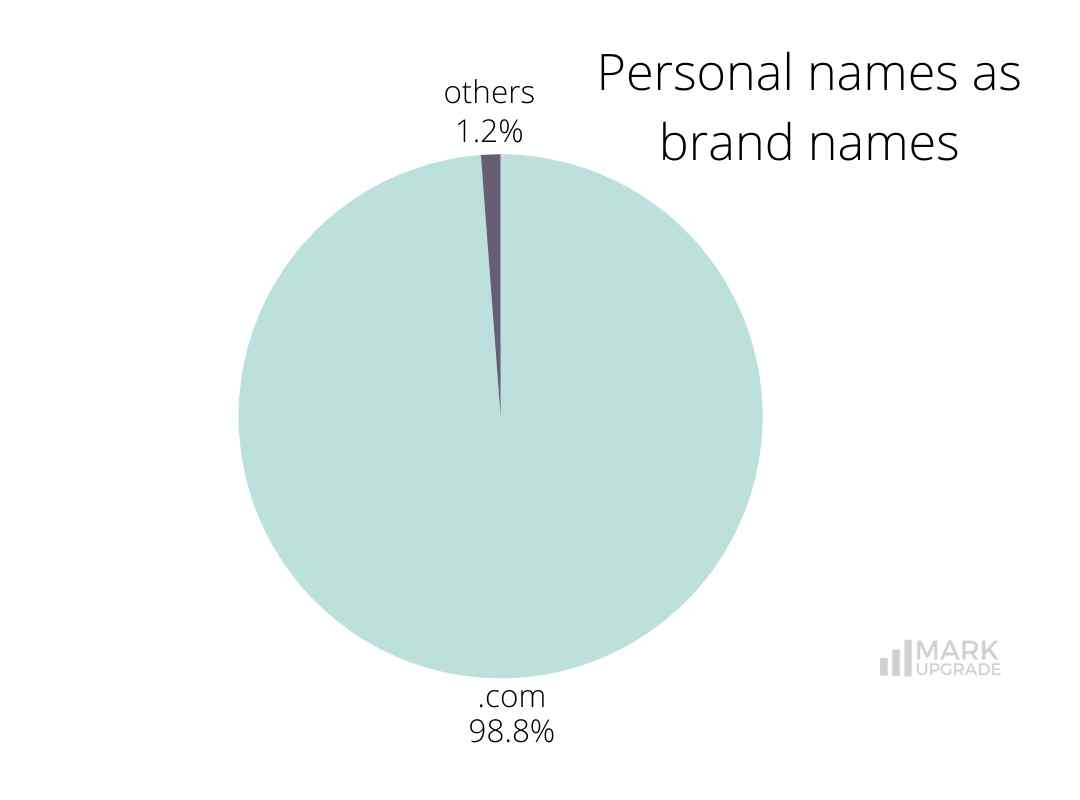
2 companies operate on .com.au, and one company has chosen the .co.uk extension. Country domain codes offer more freedom of choice but come with certain risks.
484 out of 500 companies in our list have invested in exact brand match domains. A solid online presence is critical to any company’s success. An exact-match top-level domain name ensures that the business will be easily found online, as the default domain is what customers will look for when trying to reach the brand. Here is what owners of premium domain names share about the benefits of owning and investing in such names.
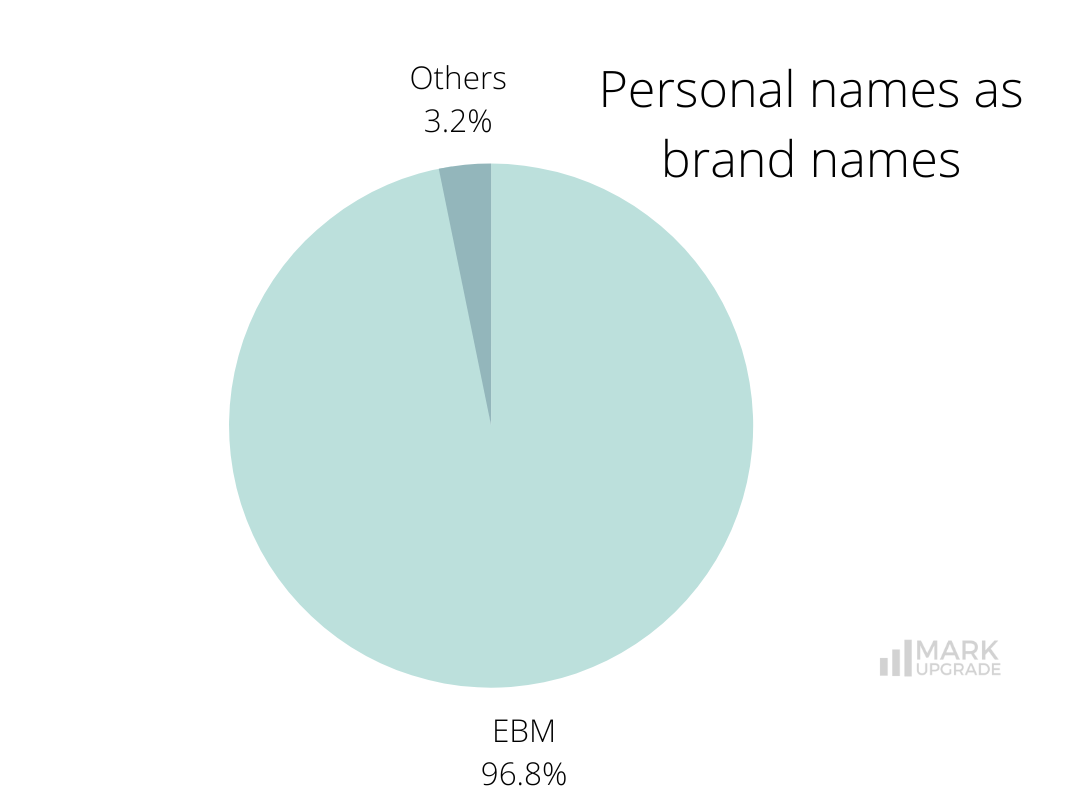
8 companies use a dash in their domains. Dashes are often included with two-word brand names or added words when the business has to compromise on their domain if the exact brand match name is taken/not within reach.
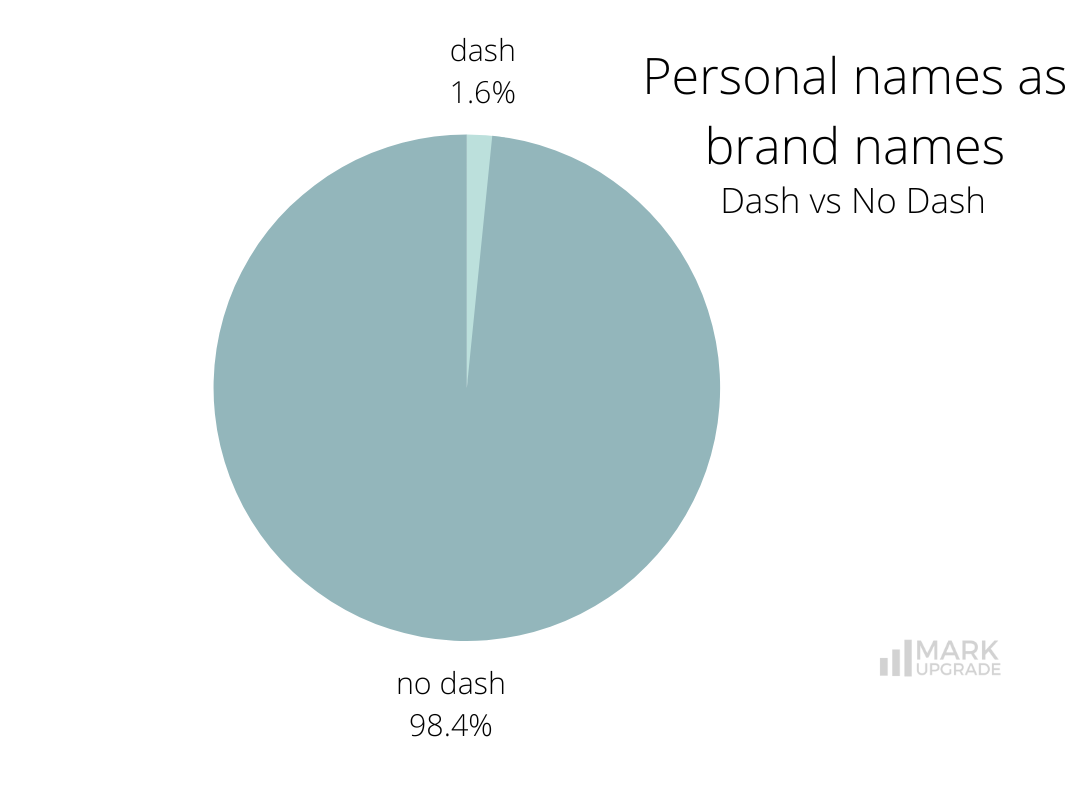
While we make every effort to ensure the data on our site is accurate, complete, and up-to-date, we cannot guarantee its reliability. Our data is provided for informational purposes only and should not be relied upon as legal, financial, or other advice. We strongly recommend that you independently verify any information before relying on it.
When it comes to premium domain names, it’s important to weigh the potential loss in terms of brand recognition and revenue against the cost of the investment. In the long run, a premium domain name can be a valuable asset for your business. Contact us to learn more about our premium domain options and how they can help your business succeed.
Other resources
branding business domain domain name domain names domains naming personal brand names

Previous Next